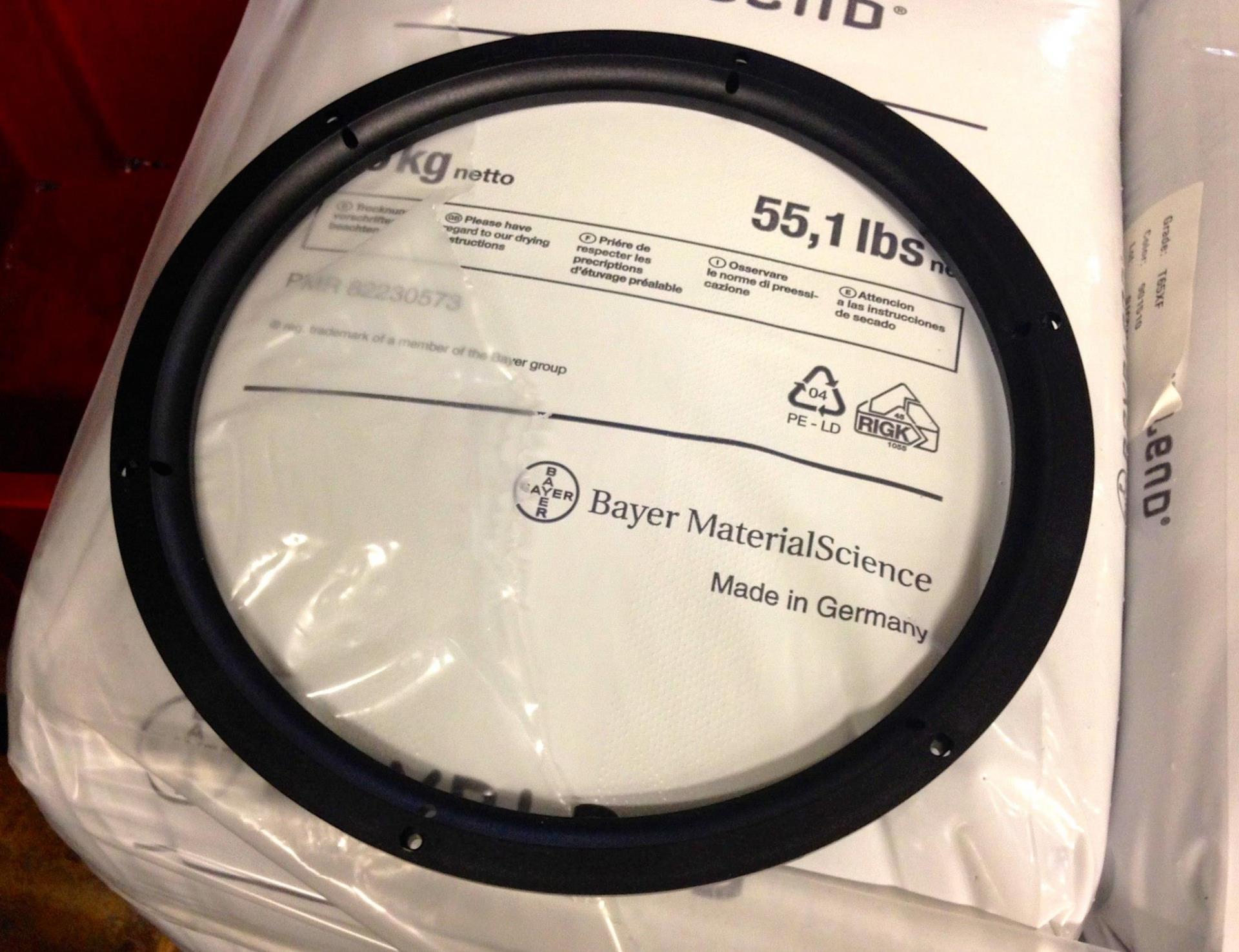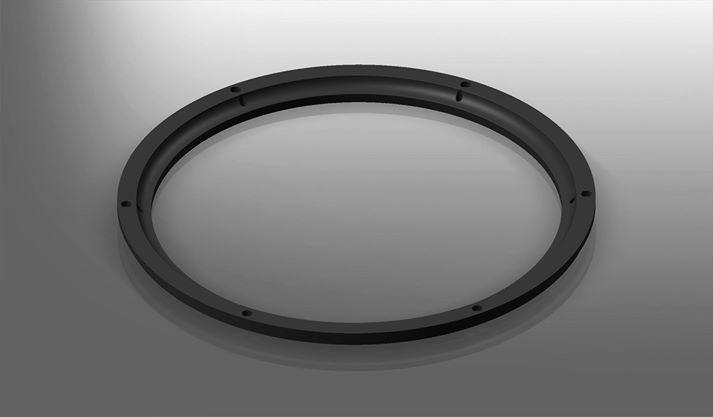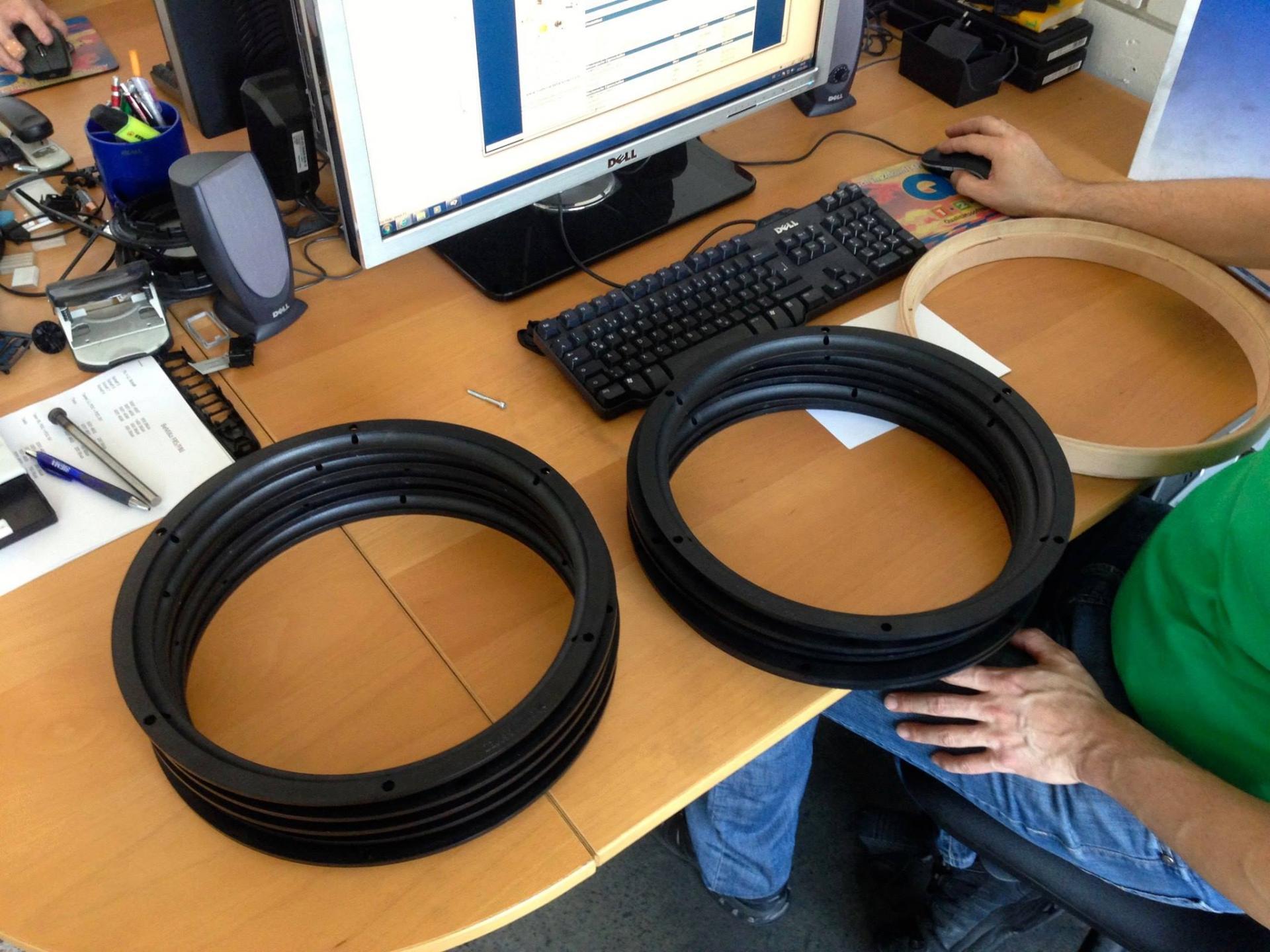ChangeHED Info

The ChangeHED Skin holding system offers great benefits for beginners, advanced and experienced players alike.
The Maker about his invention:
During the Craiceann bodhrán summer school on Inis Oírr in June 2013 I presented the ChangeHED skin holding system. For me, this skin holding system that offers the possibility to replace both the drum skin and the tuning frame, is the result of all of my developments and all my experience of the past 12 years.
For its standard fixed diameter of 37 cm, the ChangeHED certainly can’t meet all customer demands, and to a certain extent, the sound possibilities are limited. That’s why it goes without saying that I’ll continue making custom-made drums and, of course, Signature Lines.
However, the ChangeHED system offers great advantages for beginners and advanced players, and it helps them with their individual progress. The drum can be adjusted to your way of playing, your sound preferences and playing situations.
Like a chameleon, the drum changes and adapts to its environment.
Another huge advantage of the ChangeHED system is that you can use it as a developer tool. For example, tuning frames can be reworked and retested with the same skin as often as required. Different skins can be tested on the same tuning frame, offering unique and new possibilities to instrument makers.
ChangeHED is more than just a drum. ChangeHED is a drum system – a system with components that can be flexibly combined and replaced, at any place and with parts from any manufacturer.

THE BENEFITS OF THE CHANGEHED SKIN HOLDING SYSTEM:
Perfect for beginners, who can start off with an “all-purpose skin” like the DRAGONSkin®classic, and choose the skin and the tuning rim that suit them best at a later stage without having to purchase a new drum. You can now use a synthetic skin for playing open-air gigs in bad weather and change back to your favourite natural skin afterwards.
Bodhrán teachers can choose a transparent synthetic skin for a better demonstration of left/right hand coordination, and go back to the natural skin for gigs or sessions after class.
Players can swap skins with other players. “Spine line in the center of the skin, at 2/3, at the edge, or rather no spine in the skin at all? How does DRAGONSkin®classic sound compared to DRAGONSkin®spicy? Should I try a TwinSkin? How does a deer DRAGONSkin® sound? How different does my favourite skin sound when I use a compressor tuning frame instead of the standard comfort rim?” Try it out and take your time in finding out what works best for you! :)
You can now get a new main frame for your favourite skin – we offer custom-made frames in practically all variants, even concave frames! You now have the option to take a spare skin with you when going on tour.
Customers around the world can now save money for shipping fees and customs clearance by being able to mount the skin themselves without having to send in the entire drum for repair.
The nail / ribbon design is not attached to the main frame any longer, but to the drum skin!
This means that now you can get, for example, a DRAGONSkin®spicy with a red ribbon and silver nails for a grey main frame, an additional spare deer skin without decorative nails, another EdlauerSelect spare skin just taped without decorative nails, another spare TwinSkin skin with a black nylon ribbon, and another transparent synthetic spare skin with a black nylon ribbon. The choice is yours!
*** A brief note on the history of drum heads: the idea of interchangeable drum heads is not new to the bodhrán world. Victor Barral and Darius Bartlett are only two examples of makers who have used interchangeable systems before me. Not to mention that these kinds of drum heads are a common feature of drum kits. My personal contribution to this idea is the possibility of changing not only the drum head, but also the tuning rim. I first presented this option in my SR bodhrán 2007 ***
All about the available ChangeHED drumheads and tuning rims HERE!

Why does ChangeHED look the way it looks? What are the maker’s intentions behind it? Couldn’t you have built it differently?
Why don’t you take the common drum kit skin system with aluminum frames as a basis?
Why are the fixing screws (the small Allen screws) behind the tuning screws, and not between them, which would be handier for assembly?
Why didn’t you go for a system that doesn’t require tools?
Why is ChangeHED only available for 37cm / 15"?
Why does ChangeHED have 6 tuning screws?
Some closing words from the maker?

VISION:
My vision is that players and drum makers around the world work as one, and that they develop new tuning frames, new drum skins, and new outer frames, together improving bodhráns in general. Players then won't speak of "the best maker", but of the best components, and they will discuss different drum skins – natural and synthetic ones, different tuning frames, different tuning frame materials, and so on.
Specialists will develop new tuning frames from one or more materials – synthetic materials, glass, metal, various types of wood... and it will be possible to try out all of this on different drum skins and one and the same frame, anywhere in the world.
With the ChangeHED skin holding system I've laid the foundation for the realization of this vision.
Now I've taken the next step. I've made the biggest investment since establishing my company. If you consider all aspects of the ChangeHED system, you come to the conclusion that
there has never been a drum system requiring to be made with this degree of precision: 12 points have to match exactly in 6 positions, all components have to be circular, yet there has to be enough clearance to even out material variation and later deformation.
the system must be reliable and stable. It must be suitable for tools that are available anywhere in the world, so special tools or untested connections are out of the question.
this system can only work if it lives and is kept alive. Players and makers have to cooperate, exchange ideas, and work on it together. For this, the most important component of the ChangeHED system, the core that keeps all components together and determines the measurements, must be 100% precise and has to be easily available.
That's why I've decided to produce the ChangeHED frame as a die cast component from high-quality plastic. The development of the injection mold was extremely complex. It took two and a half months to build it and to produce the first perfect ChangeHED frames.
"Plastic instead of wood? For a high-quality instrument?"
Sure, why not? (!)
The component at this position in the sound system has only a minor influence on the overall sound, it only transfers the structure-borne sound transmission from the tuning frame to the outer frame. I used to use metal components for this, but many of my colleagues have been using plastic blocks for many years. As regards the sound, there is no reason not to do so.
Even if many players are not aware of it, plastic has been used in bodhráns for a long time: heads of tuning screws, tape, ribbons, varnish, each individual glued joint – these are all synthetic materials.
For me, taking this step is the result of a long decision-making process.
The more you think about the requirements of this component, the more logical the demand for a plastic die-cast part becomes.
Highest precision and reproducibility whilst saving weight and providing good availability.
For me, this is a big step.
Forward.
Christian
All about the available ChangeHED drumheads and tuning rims HERE!
TUNING Rim PROFILES
Different tuning rim profiles with individual bearing edge designs influence the sound of each and every individual drum skin.
The compressor tuning rim produces a dryer and more defined sound and is therefore a welcome alternative for studio recordings or on stage.
For synthetic skins, we offer a special tuning frame with cotton-covered bearing edge that makes the skin a bit more “natural” without making it lax or imprecise.
The “Bassmonster” tuning rim with a thick chamois leather-covered bearing edge and a large rounded profile interior gets the maximum of long vibrating, warm and rich base sounds out of every drum skin.
Tuning rims with chamois leather-covered bearing edge prevent squeaking when using soft, flexible skins and increase tuning stability.
The Universal Comfort Tuning rim WITHOUT chamois leather-covered bearing edge helps to reach the highest possible brilliance when using harder skins (softer skins may start to produce squeaking sounds).
The Universal Comfort Tuning rim WITH chamois leather-covered bearing edge is suitable for all skin types, without influencing the sound too much in one direction. Its profile is slightly curved to the inside and offers maximum playing comfort!
DRUM SKINS
Different drum skins not only have different sound characteristics. They also feel differently when playing, and they react differently to climatic conditions. The following skins are currently available for the ChangeHED system:
Our popular EdlauerSelect (formerly called “standard skin”) in different thicknesses, with our without spine line, goat skin. Other skins, e.g. deer, calf or horse available upon request.
DRAGONSkin® in the design variants velvet, classic and spicy.
Synthetic skins. These skins are almost immune to climatic changes. Sound-wise, we’ve had the best results using REMO Skyntone®; and Fiberskin3. We offer transparent variants for teaching purposes.
TwinSkin is available in all possible and impossible combinations ;). Skin rings, stripes and patches between both skins are no problem!
We also offer just the uncovered skin holding frames, giving you the option to mount the skin yourself or have another drum maker mount it.
All about the available ChangeHED drumheads and tuning rims HERE!
GALLERY Development/production


Transport plate
The simple wooden plate has the same diameter as the tuning frame and is clamped into the skin with rubber plugs when it is not on the drum. It protects the skin against deformation and damage during transport and is intended to keep the skin "in shape" when it's not under tension. It also prevents unintentional "retightening" of the skin. The transport panel is included free of charge with every replacement skin.
New natural drumheads are shipped vacuum sealed.




